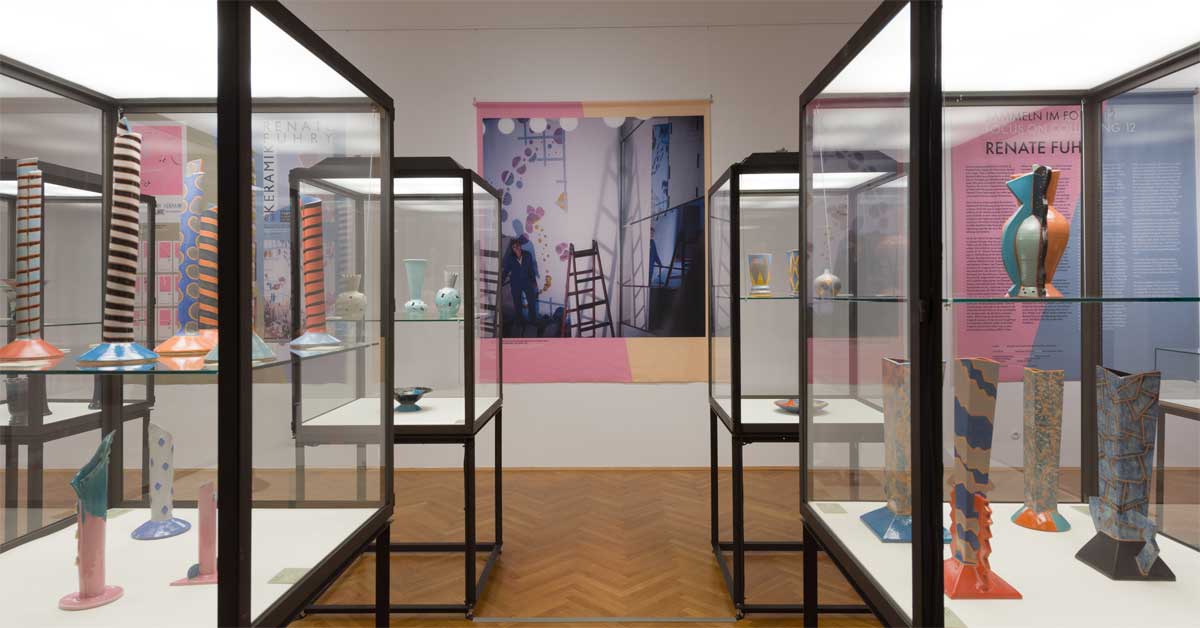

7 February 2025  A Bold Generation: The Avant-Garde of the 1970s and 1980s in Austria In the vibrant art scene of the 1970s and 1980s, a cohort of innovative artists emerged, pushing the boundaries of traditional mediums. Among them was Renate Fuhry, a ceramist whose work stood alongside contemporaries like Kiki Kogelnik. Fuhry and Kogelnik shared a mutual respect and friendship, with Fuhry notably inspiring Kogelnik's interest in ceramics. Influences from Wiener Werkstätte Pioneers Fuhry's artistic journey was influenced by prominent figures of the Wiener Werkstätte, including Vally Wieselthier, Kitty Rix, and Susi Singer. These artists were renowned for their expressive and avant-garde ceramic creations. Wieselthier, for instance, was celebrated for her dynamic and often whimsical sculptures, while Rix and Singer contributed significantly to the evolution of ceramic art in early 20th-century Vienna. Their pioneering works left a lasting imprint on Fuhry's evolving style. Education and Early Recognition Born in Witten, Germany, in 1938, Renate Fuhry (née Müller) received her education at the Folkwang School of Design in Essen and the Krefeld School of Applied Arts, studying under Bruno and Ingeborg Asshoff. After moving to Vienna in 1960, she established her own ceramics studio in 1961. By 1964, the Austrian Museum of Applied Arts (now the MAK) showcased her work in an exhibition alongside goldsmiths Elisabeth Defner and Helfried Kodré. In 1965, Fuhry opened a studio in Vienna's 1st district, deepening her connections within the city's art community. She also began a teaching career in sculptural design at the Academy of Fine Arts in Vienna, a position she held for over four decades. The MAK Exhibition: A Tribute to Six Decades of Work The MAK has long recognized Fuhry's contributions, incorporating her works into its collection since the 1960s. The current exhibition, *FOCUS ON COLLECTING 12: Renate Fuhry*, running from January 29 to May 11, 2025, offers a comprehensive look at her six-decade-long career. Featuring approximately 80 selected pieces from both private collections and the MAK's holdings, the exhibition provides insight into her consistent yet evolving artistic journey. Notably, it includes objects from her later period, primarily bowls created after 2010. The Vase as a Lifelong Theme Throughout her career, Fuhry remained dedicated to the vase, describing it as the "theme of her life." Her early works are characterized by functional forms with dark glazes in brown and blue. In the 1970s, influenced by the Wiener Werkstätte ceramists, she began incorporating sculptural elements and vibrant glazes, transforming her vases into monumental, bud-like shapes. The 1980s saw her experimenting with freeform designs and pink glazes, reflecting a postmodern sensibility. A Legacy That Deserves More Recognition Despite her significant contributions to ceramic art, Fuhry received limited formal recognition, with her most notable accolade being the Art Sponsorship Prize from the Central Savings Bank of the City of Vienna in 1976. The MAK's exhibition not only celebrates Fuhry's artistic achievements but also aims to highlight her importance within Austria's craft scene, bringing her work to a broader audience. Image: The picture shows a glimpse of the exhibition "FOCUS ON COLLECTING 12: Renate Fuhry," on view at the MAK Forum of the MAK Museum of Applied Arts in Vienna from January 2 to May 11, 2025. Photo: © MAK/Stella Riessland. |